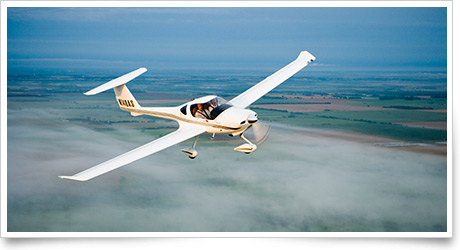training tipsA new kind of fog?
Forecast conditions—clear skies, no wind—invite the formation of radiation fog, and as expected, the morning brings an obscured ceiling and low visibility. Visual meteorological conditions and light winds are expected to take hold eventually, so you head for the airport to preflight your trainer and update the weather. Perhaps conditions at the destination—which also is reporting low IFR conditions—will improve. An hour later the ceiling is lifting, and you can see breaks in the overcast. The trend is confirmed by surface weather observations along your proposed route, as temperatures and dew points diverge.
So, why do conditions at the destination airport remain unchanged even though an airport just a few miles away was one of the first to go "severe clear" on this beautiful day?
Perhaps the information is erroneous. But a check of notices to airmen reveals no outage of the automated weather observation system. There have been no pilot reports at this early hour, so you take the bull by the horns by calling the destination's fixed-base operation, where someone confirms that the place is still fogged in.
“We get a lot of valley fog here. It’s bad today,” says a friendly voice on the phone.
Studying for your knowledge test, you learned about radiation, advection, and precipitation fog, but valley fog?
“Valley fog refers to radiation fog that forms as cool air moves down into a valley. If you’ve ever driven on foggy nights you've probably noticed fog covering the low places in the road while the hilltops are clear,” explains this Flight Training magazine article, also noting that in winter, “valley fog can linger for days because the air never warms above the dew point.”
Fortunately, it’s spring now. But as you look at the destination on your sectional chart, insight takes hold when you perceive that the airport, unlike the one nearby, nestles along a riverbank between sharp ridges.
Now those seemingly conflicting surface reports make sense—and you can apply this added element of your flight-planning skill to the preparation for your next cross-country. training productsSporty's unveils iPad Mini kneeboardSporty’s is now offering the iPad Mini slimline kneeboard. The kneeboard is a simple mounting surface with elastic straps on the corners for holding an iPad Mini. The knee strap can be orientated for portrait or landscape viewing. The cost is $15.95. Note: Products listed have not been evaluated by ePilot editors unless otherwise noted. AOPA assumes no responsibility for products or services listed or for claims or actions by manufacturers or vendors. final examQuestion: I'm a student pilot planning a solo cross-country flight. One of my landing points is a towered airport, but the tower is closed on weekends, when I plan to make the flight. Does the tower need to be open in order to count this toward my private pilot certificate as one of my solo landings at a towered airport? Answer: Yes, the tower needs to be open to count this airport toward the certification requirements of FAR 61.109(a)(5)(iii). The regulation reads that 10 hours of solo flight time must include "three takeoffs and three landings to a full stop (with each landing involving a flight in the traffic pattern) at an airport with an operating control tower." The key to this regulation is "operating." When the tower is closed, the airport will operate as a nontowered airport. Therefore this airport cannot be used to satisfy the requirement. Got a question for our technical services staff? Email [email protected] or call the Pilot Information Center, 800/872-2672. Don’t forget the online archive of “Final Exam” questions and answers, searchable by keyword or topic. |
 It's certain that you have taken an important leap forward in your aviation weather knowledge when you can study an
It's certain that you have taken an important leap forward in your aviation weather knowledge when you can study an 

